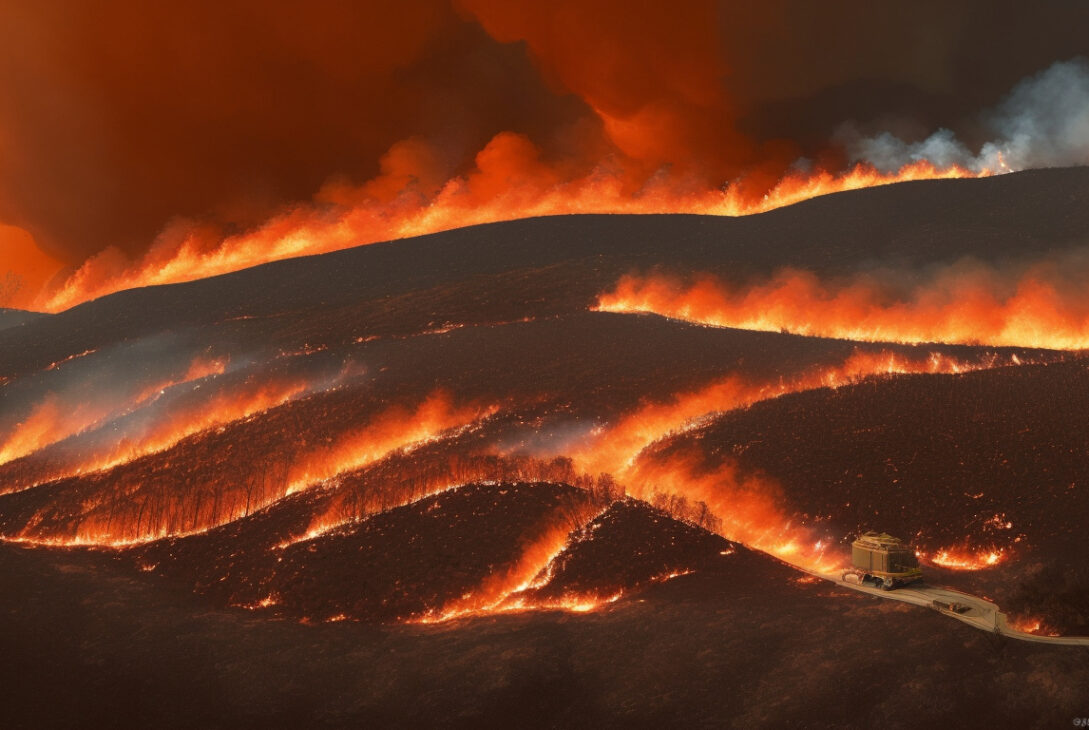California’s Wildfire Moonshot: Harnessing Cutting-Edge Technology to Defeat Advancing Flames
By Hayley Smith | Los Angeles Times | August 10, 2025
In the escalating battle against devastating wildfires, California is pioneering a new frontier: employing advanced technology to detect and suppress fires before they grow. A recent demonstration in San Bernardino showcased an autonomous Sikorsky Black Hawk helicopter, equipped with artificial intelligence and sensors, designed to respond instantly to wildfire ignitions without human intervention. This innovation epitomizes the state’s audacious goal—a wildfire “moonshot” aimed at limiting fires to under 10 square feet before they spread.
A Future Vision of Autonomous Firefighting
Imagine lightning striking deep in a forest at night. Instead of a slow, manual response, a satellite overhead detects the spark within seconds and triggers an alarm. Nearby, an autonomous Black Hawk helicopter, equipped with sophisticated sensors and AI-driven planning, takes off immediately. It analyses wind speed and fire movement, coordinates with companion drones, and drops water precisely where needed to smother the flames—all without a single firefighter on board.
This is not science fiction, but a glimpse of firefighting’s imminent future.
On April 25, fire experts from Cal Fire and local agencies gathered at Victorville to witness this technology firsthand. Developed by Lockheed Martin in partnership with California software company Rain, the experimental helicopter reflects a broader surge in wildfire technology fueled by the urgency of climate change and recent catastrophic firestorms that devastated neighborhoods such as Altadena and the Pacific Palisades earlier this year.
Climate Change: Fueling More Frequent and Intense Fires
Scientific research paints an alarming picture: globally, extreme fire events could rise by 30% by 2050. California, in particular, faces projections of a 50% increase in wildfire frequency and a 77% increase in land burned annually by 2100, according to the state’s latest climate assessment.
Kate Dargan Marquis, former California state fire marshal and senior advisor at the Gordon and Betty Moore Foundation, emphasizes the link between rising temperatures, drier landscapes, and increased fire risk. "Fires are going to increase in size, intensity, and frequency,” she said. “Current systems, infrastructure, and technology aren’t sufficient for what’s coming. We must accelerate innovation now.”
The Rise of AI and Autonomous Systems in Wildfire Detection
California currently operates over 1,100 mountaintop cameras that use artificial intelligence to detect flames early and alert firefighting teams. NASA’s Earth observation satellites and a new constellation launched by Google complement these efforts, improving detection speed and landscape condition monitoring.
Dan Munsey, chief of the San Bernardino County Fire Protection District and chair of the International Fire Chiefs Association’s technology committee, believes these advancements can revolutionize wildfire management.
“Our aim,” Munsey explains, “is that 95% of fires can be contained to 10 square feet or less. It’s a bold vision, akin to the moon landing, but boldness is essential if we want to stop the repeated destruction we’ve seen.”
Munsey stresses that achieving this moonshot requires reimagining budgets, infrastructure, and firefighter training alongside launching next-generation tools like autonomous helicopters, drones, AI cameras, and satellite monitoring.
Beyond Today’s Technology: The Next Wave of Innovations
Veteran fire service expert Kirk McKinzie envisions even more transformative tools on the horizon:
-
Augmented Reality Helmets: Firefighters could access real-time 3-D imaging of burning structures, mapping exits and identifying trapped individuals while receiving early warnings of hazards like smoke explosions or collapses.
-
Smart Fire Trucks and Nozzles: Equipped with cameras, sensors, and radar, these vehicles would enable faster response times and monitor water flow to preempt supply issues.
-
Intelligent Uniforms: Embedded with physiological sensors to track heart rates and health metrics, allowing commanders to ensure crew safety proactively.
While these advancements promise a revolutionary shift in wildfire response and safety, they also come with significant costs and require sustained investment.
A Call to Action
Maxwell Brodie, CEO of Rain, encapsulates the urgency: “We want people to live knowing their homes and neighborhoods are protected from catastrophic fire. The threat is growing, and there is no time to waste.”
As California confronts worsening wildfire seasons fueled by climate change, the intersection of innovation, bold vision, and collaboration between agencies and private technology firms offers a hopeful path forward—one that may redefine how communities face the flames.
Photo Caption: An autonomous Sikorsky Black Hawk helicopter demonstrated at Million Air, Hesperia, exemplifies California’s next-generation wildfire fighting technology. (Photo: Carlin Stiehl, Los Angeles Times)
For continued updates on wildfire technology and climate resilience, follow the Los Angeles Times’ Climate & Environment coverage.










